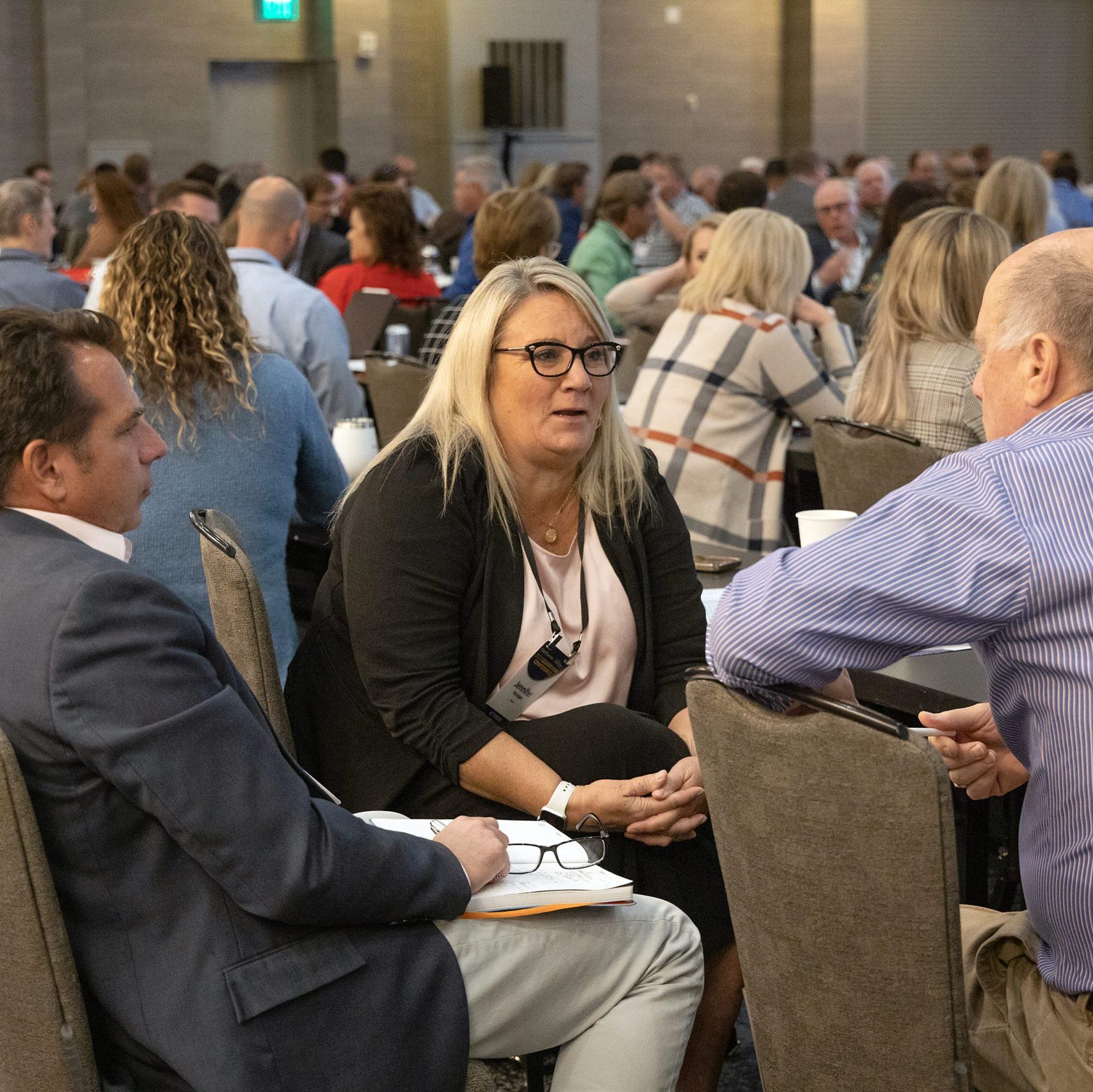
As attendees learned on a tour of Boeing’s Everett plant, the aerospace company is at the frontier of using advanced composites. Both its 787 Dreamliner passenger aircraft and the new generation of 777X jets currently under development are composed of diverse materials that improve fuel efficiency by making the aircraft lighter without adversely affecting strength and durability.
Other manufacturers employ composites to build structures that have unique properties like thermal and electrical conductivity. “We’re seeing interest in different types of composites across many different manufacturing entities,” said Bryan Dods, CEO of the Institute for Advanced Composites Manufacturing Innovation, a two-year-old public-private partnership that seeks to increase composites production capacity and jobs. “We’re working with a manufacturer of compressed gas storage tanks to develop a new generation of tanks with 75% composite materials.”
The way structures are created is also changing as manufacturers adopt new technologies like 3-D printing—making an object from a three-dimensional digital design by laying down many thin layers of a composite material in succession. For the most part, the technology is used for rapid prototyping—physically printing out a 3-D design within hours, as opposed to days with a traditional development process.
While 3-D printing can be used to make virtually anything, cost is a challenge. “In a part-to-part comparison with traditional manufacturing, 3-D loses out in most cases because it’s expensive,” said Duann Scott, head of business development and strategy for digital manufacturing at Autodesk, a provider of 3-D design, engineering and entertainment software.
“In a part-to-part comparison with traditional manufacturing, 3-D loses out in most cases because it’s expensive.”
Still, Scott sees massive potential for mainstream manufacturing applications as 3-D design software and additive manufacturing processes become more seamless. “Right now making a small part using 3-D printing requires up to six pieces of software to get the print from the design stage into the machine and out,” he explained. “If there’s a mistake, it can take 24 hours to find the cause.”
Autodesk has narrowed down the process using a single simulation software solution called Netfabb that shares a common installer, file format and process definitions. “It can make small parts in minutes and complex ones in hours,” Scott said. “We can even make parts better than can be made traditionally, such as with holes that curve, rather than the straight holes made using a drill.”
Another advantage to 3-D printing is the ability to design and make large assemblies as a single part. GE Digital, for instance, was able to 3-D print half of a machine, paring down 900 separate components to just 16, including one component that previously had 300 different parts, reported Paul Boris, former vice president and head of Manufacturing Industries for GE Digital. Not only were the printed parts 40% lighter and 60% cheaper, but the process trimmed the number of suppliers from about a dozen to one. “This is true optimization of the supply chain,” said Boris, who left GE Digital in May for the chief operating officer post at Vuzix, a maker of virtual reality technologies.
ROBOTS AND PEOPLE
Another iteration in advanced manufacturing techniques, robotics, is often viewed as a way for manufacturers to reduce labor costs. The truth is more nuanced: Rather than replace people, robots efficiently and safely take on certain tasks, augmenting the work still being done by people. “We’re not going to see an exclusively robotic factory, but we will see the optimum use of robots and people,” said Dennis Muilenburg, CEO, president and chairman of Boeing.
An example is repetitive, unsafe and monotonous tasks that can cause ergonomic injuries and injuries. “Our goal is to balance our EHS [environmental, health and safety] initiatives with our productivity initiatives,” said Muilenburg. “Robots allow our employees to work safely, faster and at less cost.”
Greater strides will be taken in future to allow for robots and people to collaborate more effectively, said Sujeet Chand, senior vice president, advanced technology, and chief technology officer at Rockwell Automation, a provider of industrial automation and information products. As an example, he cited a company that produces electric vehicles. “The company wanted a way to enhance collaboration between people and robots, whereby the robots would pick up 14 heavy battery packs and put them in the chassis of the car, and then people would wire the battery packs together,” Chand said.




0

1:00 - 5:00 pm
Over 70% of Executives Surveyed Agree: Many Strategic Planning Efforts Lack Systematic Approach Tips for Enhancing Your Strategic Planning Process
Executives expressed frustration with their current strategic planning process. Issues include:
Steve Rutan and Denise Harrison have put together an afternoon workshop that will provide the tools you need to address these concerns. They have worked with hundreds of executives to develop a systematic approach that will enable your team to make better decisions during strategic planning. Steve and Denise will walk you through exercises for prioritizing your lists and steps that will reset and reinvigorate your process. This will be a hands-on workshop that will enable you to think about your business as you use the tools that are being presented. If you are ready for a Strategic Planning tune-up, select this workshop in your registration form. The additional fee of $695 will be added to your total.

2:00 - 5:00 pm
Female leaders face the same issues all leaders do, but they often face additional challenges too. In this peer session, we will facilitate a discussion of best practices and how to overcome common barriers to help women leaders be more effective within and outside their organizations.
Limited space available.

10:30 - 5:00 pm
General’s Retreat at Hermitage Golf Course
Sponsored by UBS
General’s Retreat, built in 1986 with architect Gary Roger Baird, has been voted the “Best Golf Course in Nashville” and is a “must play” when visiting the Nashville, Tennessee area. With the beautiful setting along the Cumberland River, golfers of all capabilities will thoroughly enjoy the golf, scenery and hospitality.
The golf outing fee includes transportation to and from the hotel, greens/cart fees, use of practice facilities, and boxed lunch. The bus will leave the hotel at 10:30 am for a noon shotgun start and return to the hotel after the cocktail reception following the completion of the round.